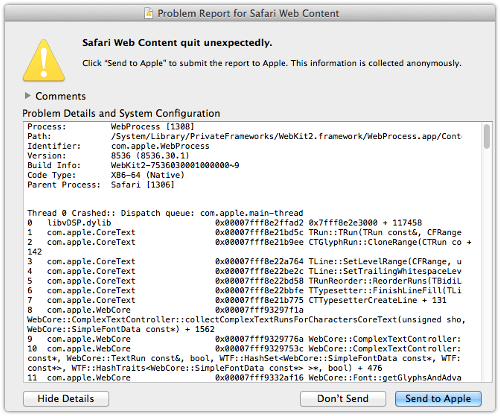Oh, those crazy Syrian hackers: Now Wash Post, CNN, Time vandalised
Win a top of the range HP Spectre laptop
Syrian hacktivists claim they are the vandals responsible for scribbling over the websites of CNN, Time mag and The Washington Post yesterday.
But these latest boasts by the Syrian Electronic Army (SEA) are somewhat misleading, according to computer security experts who say that the hacking crew actually ransacked Outbrain – a marketing biz used by WashingtonPost.com, Time.com and plenty of others to provided links to related articles and stuff online.
It’s understood the miscreants, who back Syria’s President Bashar al-Assad, compromised Outbrain’s systems and hijacked those embedded links to point to the SEA’s website. Outbrain confirmed its security was breached, which it said was pulled off using phishing emails posing as messages to staff from its chief exec.
Marc Gaffan, co-founder of web security firm Incapsula, explained: “The cause of the breach was actually performed by sending phishing emails to all Outbrain employees which caused them to surrender their email passwords. With access to employee email accounts the hackers were able to obtain or reset passwords to the admin areas of the content marketing platform, leading to the visible part of the breach.”
“If Outbrain’s admin areas had two-factor authentication enabled on them, this could have been prevented,” he suggested.
In a statement, The Washington Post added that one of its staffers did have his Twitter profile compromised by the SEA earlier this week, but explained that the main aspect of Thursday’s hack relied on breaking into Outbrain’s systems:
Earlier this week the Twitter account of one of our journalists was compromised as part of a larger attack aimed at social media management group SocialFlow, and Thursday an attack on content recommendation service Outbrain caused some of our stories to redirect to the the SEA homepage.
Outbrain responded to the hack by temporarily suspending its services. A detailed timeline on how the compromise unfolded can be found here.
The SEA, meanwhile, congratulated itself on drilling into Outbrain’s control panels on its official Twitter account:
@TIME, @CNN, @Washingtonpost websites hacked in one strike by hacking @outbrain #SEA #SyrianElectronicArmy #Syria pic.twitter.com/5OI1BE2oCM
— SyrianElectronicArmy (@Official_SEA16) August 15, 2013
Time, CNN and WashingtonPost Websites Hacked by #SEA | http://t.co/bkCzCDRsZe #SEA #SyrianElectronicArmy pic.twitter.com/2X2v9ZaeVU
— SyrianElectronicArmy (@Official_SEA16) August 15, 2013
Outbrain’s content-recommendation widget, embedded into web pages, is supposed to help internet publishers boost their online traffic. Users are offered links to articles and other stuff to read or watch. SEA foot soldiers alleged they obtained access to Outbrain’s email spools, but this remains unconfirmed.
The Syrian Electronic Army is a loose-knit hacker group loyal to President al-Assad. Its campaign of online disruption began in mid-2011, and has involved distributed denial-of-service attacks against servers, phishing emails to hoover up passwords, pro-Assad graffiti on websites, and spamming against governments, online services and media outlets that are perceived hostile to the government of civil-war-torn Syria.
Its speciality is firing off spear-phishing emails to hijack Twitter accounts and other social-networking profiles run by media organisations and use the compromised logins to push links to pro-Assad propaganda.
Victims over recent months include Al Jazeera, the Associated Press, BBC, the Daily Telegraph, the Financial Times, the Guardian, Human Rights Watch, America’s National Public Radio, Thompson Reuters and more. Over recent weeks the group diversified into attacking into the backend systems of VoIP apps, namely Viber and Tango. ®
Win a top of the range HP Spectre laptop
Article source: http://go.theregister.com/feed/www.theregister.co.uk/2013/08/16/sea_outbrain_hack/
 Mother and daughter, Karen and Tracy Vasseur from Colorado, US, have been jailed for a total of 27 years after they
Mother and daughter, Karen and Tracy Vasseur from Colorado, US, have been jailed for a total of 27 years after they 



 Facebook has published a
Facebook has published a